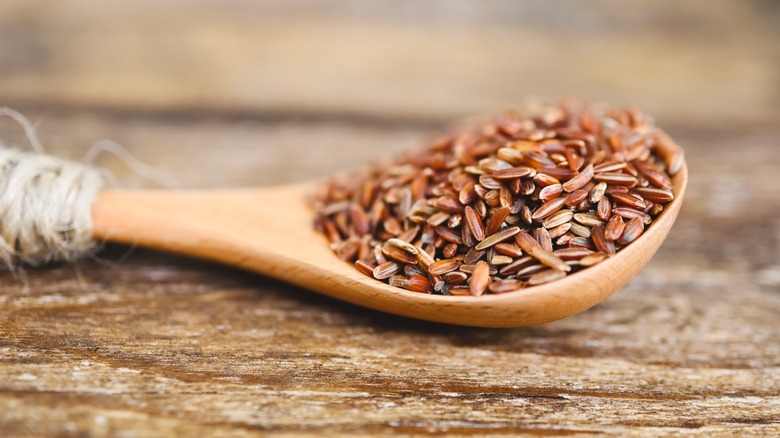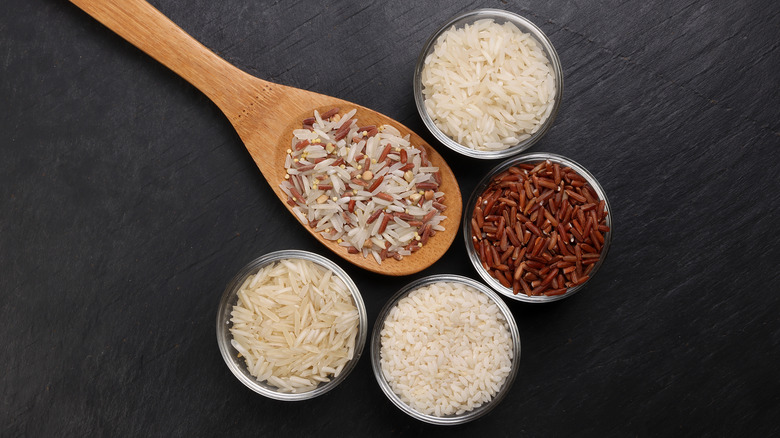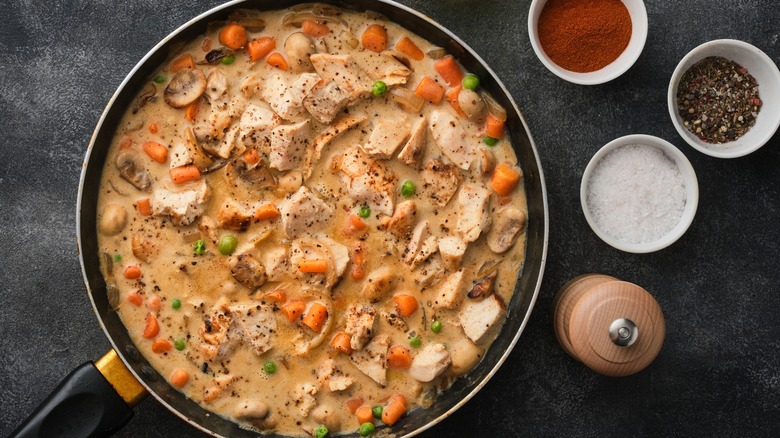Add Red Rice To Stews For A Perfect Al Dente Bite
If you haven't encountered the joys — both culinarily and nutritionally — of adding whole-grain rice to a stew, it's time to remedy that situation. This type of rice comes in many varieties and makes a marvelous addition to any hearty soup or stew, and not just because it adds a nutty deliciousness: It won't turn to mush like regular white rice, instead adding an appealing al dente chew. You might have heard of the black and brown types of whole-grain rice, but we'd like to draw particular attention to red rice — for several very good reasons.
Packed with fiber and high in protein, red rice is a nutritional powerhouse. It tastes nutty and is slightly sweet, slotting in beautifully with things like chicken, onions, and sweet potatoes. Red rice is also visually appealing, ranging from light pink to brownish red hue, depending on the type you get and how it's been processed. Before getting into the particulars of red rice, we should talk about the different types of rice in general.
The many different rice varieties
Rice is a grain that is composed of a white kernel (or endosperm) and germ, the bran (an edible outer layer which can be black, brown, purple, or red), and the indigestible shell (called the hull or husk). All edible rice has the hull removed. Whole-grain rice retains its germ and bran. Anything called white rice has the bran and germ removed along with the hull, reducing both its cooking time and nutritional value. (So-called wild rice isn't actually rice at all, but rather the seeds of aquatic grasses, which sort of look and act like rice.)
What makes red rice red is an antioxidant pigment called anthocyanin, which is also present in colorful fruits and flowers. There are several types of red rice, depending on where it's grown: West Africa, Bhutan, and Thailand produce the most common varieties. They might vary a little in appearance and taste, but all types of red rice have one thing in common: It's an incredibly healthy food.
The joys of red rice
Because it's a whole grain like other wild rice, red rice is high in fiber and protein. But it really stands out in the flavonoid antioxidant department. Along with the usual anti-inflammatory and anti-carcinogenic properties of these substances, studies have shown that red rice far exceeds black rice in its ability to fight free radicals because of its higher concentration of flavonoids. But that's not all: Red rice is loaded with iron and magnesium, has a low glycemic index, and helps lower bad cholesterol. This is great news for those with heart disease, type 2 diabetes, asthma, or a general aversion to suffering from those ills.
You cook red rice like you do all other whole-grain rice: Using about two-and-a-half parts water to one part rice and allowing for around 40 minutes of cooking time, with another five or 10 minutes for steaming. After cooking, you can mix it with white rice to turn the whole dish pink or use it the next day for a particularly delectable fried rice. There's no need to pre-cook red rice if you want it in your stew, however — after a thorough rinse, you should toss it in the pot along with the broth and other stew ingredients (after adding enough water or stock to compensate) for the last hour or so of cook time. Don't let it simmer for hours, lest it go from slight chew to starchy mush!


